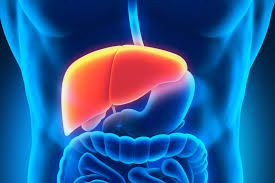How to Detect Thyroid Cancer Early: A Comprehensive Guide
Introduction
Thyroid cancer affects the thyroid gland and can have a significant impact on overall health. The thyroid gland, located in the neck, is responsible for producing and regulating hormones that influence metabolism, movement, and mental functions. Early detection of thyroid cancer is crucial for improving treatment outcomes. By identifying symptoms such as thyroid nodules or changes in voice early on, timely interventions and better management of the disease can be achieved.
This guide aims to provide you with the knowledge needed to recognise potential warning signs of thyroid cancer. By understanding these symptoms, you can take proactive steps towards seeking medical guidance if necessary. The focus is on practical information about common indicators such as abnormal lumps or unexplained weight loss related to thyroid conditions like hypothyroidism and hyperthyroidism.
However, it's important to remember that some symptoms associated with thyroid issues may overlap with other health conditions. For example, unexplained weight loss could also be linked to certain types of arthritis or joint-related issues which might require back pain relief or joint and muscle pain relief. With this understanding, you will be better prepared to pursue appropriate thyroid treatment options when necessary.
Understanding Thyroid Cancer
Definition of Thyroid Cancer: Thyroid cancer is a type of cancer that occurs in the thyroid gland, which is located in the neck. It is characterised by the uncontrolled growth of cells in the thyroid, resulting in a malignant tumour. The thyroid gland is an important endocrine gland responsible for producing hormones that regulate various bodily functions.
The Role of the Thyroid Gland
The thyroid gland plays a crucial role in maintaining overall health by producing two primary hormones: triiodothyronine (T3) and thyroxine (T4). These hormones are involved in regulating metabolism, energy levels, and even mental function. When there is a problem with the thyroid gland, such as an underactive or overactive condition, it can lead to various health issues.
To assess the functioning of the thyroid gland, healthcare professionals often perform specific tests such as a thyroid blood test or thyroid function test. These tests measure the levels of thyroid stimulating hormone (TSH) in the body, which provides valuable information about thyroid health.
Types of Thyroid Cancer
There are four main types of thyroid carcinoma:
- Papillary Carcinoma: The most common form, typically affecting younger individuals.
- Follicular Carcinoma: Less common but still prevalent.
- Medullary Carcinoma: Arises from parafollicular cells and may be hereditary.
- Anaplastic Carcinoma: Rare and aggressive, more frequent in older adults.
Understanding these types is essential for identifying specific symptoms and developing appropriate treatment plans. It also emphasises the significance of early detection and regular monitoring through necessary tests for individuals at risk of thyroid disease.
Recognising the Signs and Symptoms of Thyroid Cancer
1. Thyroid Nodules: A Common Finding
Thyroid nodules are often the first noticeable sign of thyroid cancer. These nodules are abnormal lumps that develop within the thyroid tissue, presenting as either solitary or multiple growths. Typically, a thyroid nodule is a painless mass, although some may experience discomfort. The absence of pain does not negate the necessity for evaluation; painless nodules still warrant medical attention.
A key characteristic of thyroid nodules is their texture. Often, they are hard and fixed, contrasting with benign conditions where nodules may be softer and mobile. When assessing these nodules, several red flags suggest malignancy:
- Rapid Growth: If a nodule exhibits swift enlargement, it raises concerns.
- Age Factor: Individuals under 30 or over 60 with solitary nodules should be especially cautious.
- Gender Consideration: Males with thyroid nodules have a higher likelihood of malignancy.
- Nodular Features: The presence of additional lumps or bumps on a nodule can indicate a higher risk.
Understanding these characteristics can aid in early detection and treatment, crucial for improving outcomes in thyroid cancer cases.
2. Lymphadenopathy: Enlarged Lymph Nodes in the Neck Region
Lymphadenopathy, or the enlargement of lymph nodes, plays a critical role in the progression of thyroid cancer. It often signals that cancer cells have spread beyond the thyroid gland itself. This spread occurs as cancerous cells invade nearby cervical lymph nodes, causing them to swell.
In the context of thyroid cancer, lymphadenopathy is a key indicator necessitating vigilance for timely diagnosis and intervention. These enlarged lymph nodes are typically found in the neck region and can present as part of thyroid disease symptoms, including those associated with an overactive or underactive thyroid.
Being aware of changes such as neck swelling or voice hoarseness is crucial. If you notice any persistent symptoms, especially those coinciding with a solitary nodule or rapid growth of a painless mass, seeking medical attention is essential. Early detection and understanding of these signs can significantly impact treatment outcomes for those affected by thyroid cancer.
3. Neck Swelling and Masses: Visible Changes in the Thyroid Area
Neck swelling is a significant indicator of advanced-stage thyroid cancer, particularly associated with anaplastic thyroid carcinoma. This type of cancer is notorious for its rapid growth, often resulting in noticeable enlargement of the neck area. The presence of a thyroid nodule or other masses in this region can be alarming, yet it's important to remember that not all neck masses are cancerous.
Understanding Anaplastic Thyroid Cancer and Its Impact
Anaplastic thyroid cancer (ATC) is known for its aggressive nature and rapid progression, making neck swelling more pronounced. It often presents as a rapidly enlarging mass in the thyroid region, which can cause discomfort or difficulty swallowing.
Recognising Thyroid Nodule Characteristics
Thyroid nodules are generally benign (non-cancerous) growths in the thyroid gland. They typically appear as solitary, painless masses which may grow rapidly. While most nodules are not cancerous, certain features on imaging studies or biopsy results may raise suspicion for malignancy.
Importance of Evaluation and Vigilance
Any persistent or concerning changes in neck mass should prompt evaluation by a healthcare professional to rule out malignancy. This includes assessing the size, shape, and characteristics of the mass through imaging techniques such as ultrasound or CT scans.
Being vigilant about changes such as neck swelling, especially when combined with other symptoms like lymphadenopathy (swollen lymph nodes) or voice hoarseness, can be crucial for early detection and effective management of thyroid cancer.
4. Voice Changes: Hoarseness or Loss of Voice Due to Tumour Involvement
Thyroid cancer can manifest through voice changes, notably hoarseness or difficulty in speaking clearly. This occurs when a growing thyroid mass exerts pressure on nearby structures, such as the vocal cords and the recurrent laryngeal nerve. The presence of a thyroid nodule, particularly if it is a solitary and painless mass with rapid growth, can lead to such symptoms. Being vigilant about these signs, along with other thyroid disease symptoms like lymphadenopathy and neck swelling, is crucial. If you notice persistent hoarseness or changes in your voice, it's essential to seek medical attention promptly for further evaluation and diagnosis.
5. Difficulty Swallowing (Dysphagia) and Shortness of Breath (Dyspnea)
Large tumours in the thyroid can lead to significant complications by putting pressure on nearby organs. When these growths compress the oesophagus, individuals may experience difficulty swallowing, known medically as dysphagia. This condition arises as the passage of food becomes blocked, requiring immediate medical attention if it persists.
Similarly, pressure on the trachea can cause shortness of breath, referred to as dyspnea. Breathing difficulties often indicate advanced stages of thyroid cancer, necessitating careful monitoring and prompt evaluation. Recognising these symptoms, along with others like neck swelling and voice hoarseness, is vital for early detection and effective management of thyroid disease symptoms.
6. Other Less Common Symptoms to Be Aware Of
Advanced-stage thyroid cancer may present with rarer symptoms that require attention. Horner’s syndrome is one such condition, characterised by effects on eye function due to nerve involvement. Key signs of Horner's syndrome include:
- Meiosis: Constriction of the pupils.
- Ptosis: Drooping of the upper eyelid.
- Anisochoria: Unequal pupil sizes.
These symptoms are less common but significant indicators of potential thyroid cancer progression. It highlights the importance of being vigilant about any unusual changes and consulting a healthcare professional if they arise.
Additional Factors That May Raise Suspicion for Thyroid Cancer
Systemic symptoms can be a significant indicator of thyroid cancer, particularly when they appear without an obvious cause. Two key constitutional symptoms are:
- Unexplained Weight Loss: This is not just minor fluctuations in weight but rather significant, unintended loss over several months. This can occur due to anorexia or cancer-related metabolic changes. The body may consume its reserves as the cancer progresses, leading to this noticeable symptom.
- Persistent Fatigue: Feeling constantly tired or having low energy levels might be dismissed as stress or lifestyle-related. However, if this fatigue persists even with rest and impacts daily functioning, it could signal an underlying issue like thyroid cancer.
These symptoms often accompany other Thyroid Cancer Signs & Symptoms, such as nodules or lymphadenopathy. They should prompt further investigation by a healthcare professional to rule out malignancy and ensure timely diagnosis and treatment.
The Role Of Hormonal Imbalances In Thyroid Disease Detection
Fluctuations in thyroid hormone levels, such as low TSH (Thyroid-Stimulating Hormone), are a key indicator of thyroid dysfunction. These hormonal imbalances can lead to diverse clinical symptoms, often distinguishing between hypothyroidism and hyperthyroidism.
Hypothyroidism Symptoms
When the thyroid gland is underactive, producing insufficient hormones, you may experience:
- Fatigue
- Weight gain
- Cold intolerance
- Depression
These symptoms reflect a slowed metabolism due to decreased hormone production.
Hyperthyroidism Symptoms
An overactive thyroid results in excess hormone production, leading to symptoms such as:
- Weight loss
- Heat intolerance
- Nervousness
- Increased heart rate
This condition accelerates the body's metabolism.
While these hormonal imbalances are significant indicators of thyroid issues, they are not exclusively linked to cancer. Other conditions such as autoimmune disorders can also alter hormone levels. Therefore, recognising these symptoms should prompt a thorough evaluation to rule out or confirm thyroid cancer alongside other potential causes.
When To Seek Medical Attention And How Is Thyroid Cancer Diagnosed?
Recognising when to seek medical attention is crucial in the early detection of thyroid cancer. If you experience any Thyroid Cancer Signs & Symptoms such as a persistent neck swelling, unexplained hoarseness, or difficulty swallowing and breathing, it is essential to consult a healthcare provider promptly.
Key Indicators for Medical Evaluation
- Persistent Thyroid Nodules: If you detect a lump in your neck that is hard, fixed, or rapidly growing, especially if you're under 30 or over 60.
- Lymphadenopathy: Experiencing enlarged lymph nodes in the neck region may indicate cancer spread.
- Voice Changes: Unexplained hoarseness or voice loss suggests pressing on vocal cords or nerves.
- Difficulty Swallowing/Breathing: Indicates possible compression of the oesophagus or trachea by a thyroid mass.
Diagnostic Procedures
The diagnosis of thyroid cancer typically involves several steps:
- Physical Examination: Initial assessment by palpating the thyroid gland and neck area.
- Ultrasound Imaging: Helps in evaluating the nature of thyroid nodules.
- Fine Needle Aspiration Biopsy (FNAB): Extracts cells from the nodule for pathological examination.
- Blood Tests: Checks for abnormal levels of thyroid hormones and markers like calcitonin.
Early detection and timely diagnosis play a pivotal role in managing thyroid cancer effectively. If you suspect any symptoms, it's vital to act swiftly and seek expert advice.
FAQs
What is thyroid cancer?
Thyroid cancer is a type of cancer that affects the thyroid gland, which is responsible for producing hormones that regulate metabolism, growth, and development.
What are the common signs and symptoms of thyroid cancer?
Common signs and symptoms include the presence of thyroid nodules, lymphadenopathy (enlarged lymph nodes in the neck), visible neck swelling or masses, voice changes such as hoarseness, difficulty swallowing (dysphagia), and shortness of breath (dyspnea).
How can I detect thyroid nodules?
Thyroid nodules are often detected during a physical examination or imaging tests. If you notice any lumps in your neck or experience any changes in your voice or swallowing, it is important to seek medical evaluation.
What is anaplastic thyroid cancer?
Anaplastic thyroid cancer (ATC) is a rare and aggressive form of thyroid cancer characterised by rapid growth and poor prognosis. It often presents with significant symptoms due to its aggressive nature.
When should I seek medical attention for potential thyroid cancer?
You should seek medical attention if you notice persistent thyroid nodules, changes in your voice, difficulty swallowing, or any unusual swelling in your neck. Early evaluation is crucial for diagnosis and treatment.
What diagnostic procedures are used to confirm thyroid cancer?
The diagnosis of thyroid cancer typically involves several steps including a physical examination, imaging tests such as ultrasound or CT scans, blood tests to check hormone levels, and a biopsy to examine tissue samples for cancerous cells.












